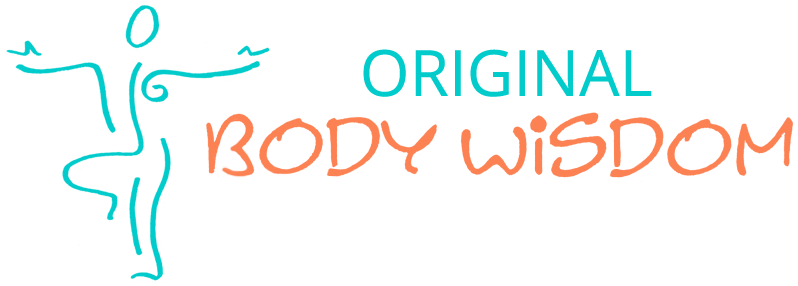These 8 Somatic Breathing Exercises to do today came to me as I searched for gentle ways to free my breath. You see, as a long time yoga and somatic movement therapist I studied many breathing techniques. Most of these dictated rules about breathing. So, for years, I imposed breathing exercises on my body. But, by giving my body the freedom to find its own breath I am healthier and happier.

Learn to Breathe Without Strain.
Did you know that the field of somatic movement therapy and education is about liberating the natural wisdom of your body including your breath? Certainly, breathing exercises do have their place. There are mechanical and physiological truths about breathing, However, somatic breathing allows you to regulate and support your breathing from the deep well of wisdom inside your body.
These exercises are meant to be done with kindness and curiosity.
It is important breathing is gentle, respectful and done without strain. The somatic breathing exercises are not end points but, rather, the beginning of having a consistently full and easy breath. Please use self compassion and curiosity with the exercises below. As a result, magic happens!
Now, for the 8 Somatic Breathing Exercises
1. Breath Awareness Exercise
With this exercise you can just sit or lie down! It is a great starting point for any practice or just to calm yourself when you need a moment. Remember, Somatic breathing exercises are about you finding your own internal wisdom.
Never force any specific motion. Breathe easily and observe without judgement or direction.
Breath Awareness Exercise:
Sit, close your eyes and feel where your body moves when you breathe.
Notice what it feels like in your nostrils, your throat, in your chest and lungs and in your abdomen.
How does this move your hips, sides of your torso, in your back and each part of your body?.
What does it feel like to witness the movement of breath in your body?
Has this exercise changed you? Has your breathing become easier?
Notes: Please note, some people feel more stress when they watch their breath. It is not uncommon with anxiety.
Somatic Breathing Exercises can help with Anxiety
2. The Anxiety Busting Breath
Ideally, If you have a wave soundscape please use it for this exercise. As above, sit or lie quietly.
This exercise has a focus on your exhalation.
Anxiety Busting Breath:
As you breathe out, lengthen your exhalation with gentle humming. Take your time and really let your exhalation complete itself. It’s longer than you think!
If you can without strain, wait and see if your inhalation arise spontaneously.
Continue humming to get that exhalation to last longer than your inhalation. The lengthened exhalation is calming.
Notes: Please note, breathing through your nose will help with anxiety and is healthy as the nose naturally filters, warms and moistens the air we take in.
Somatic Breathing Exercises Reflect the Natural Way Breathing Works.
3. Diaphragmatic Breathing Exercise
Somatic breathing involves true diaphragmatic breath. Diaphragmatic breathing is NOT belly breathing. (You can watch my video on diaphragm breathing below to see the difference.)
Diaphragmatic Breathing Exercise:
You can sit or lie for this exercise.
Find the Bottom of your rib cage and let your hands rest on the front and sides of your body. Look for movement that corresponds to your inhalation and exhalation.
Consciously feel how your lower ribs narrow and lengthen with your exhalation.
Notes: Please note, using the lengthened exhalation as above will help you feel the movement of the diaphragm.
Feeling Sound in Your Body Changes your Breath
4. Sound Stimulation Breath Exercise
This exercise is best done when you are alone so you are not nervous or embarrassed by your own vocalization. Remember, this is not about how you sound; it is about sound changing your breath. You can lie or sit.
As always with Somatic Breathing exercises, you want to be curious and allow yourself to notice changes before and after. These changes offer new information to your brain, allowing for new, more supportive habits in breath and body.
Sound Stimulation Breath:
Make a sustained SHHHH sound. You know, kind of like when you are trying to quiet someone. As you make this sound, place your hands on different parts of your chest, rib cage and abdomen. Where do you feel the most movement?
Rest. Notice what has changed in your breathing.
Now try a PSSST sound. Make it short and fast; like a piston firing. Again, allow your hands to rest on different parts of your chest, rib cage and abdomen. What can you feel?
Rest and notice any changes.
Finally, try growling! Yes, growling. If you can, make it deep and low in your throat. Again, allow your hands to rest on different parts of your chest, ribs and abdomen. What can you feel?
Notes: Please note, you may feel different engagements of muscle in your abdominal in particular. This is related to the activation of the transverse abdominal muscle- one of your primary breathing helpers.
Flexible Ribs can Be Felt!
5. Rib Pliability Somatic Breathing Exercise
This somatic breathing exercise is best done sitting or standing. It is about finding some of the natural (there are many) movements of your rib cage. Ideally, you feel curious and excited about what you may feel and find!
Rib Pliability Exercise:
Begin by noticing how much movement you have in your rib cage as you breathe normally. However, pay particular attention to the sides. You can also notice your general feeling in your body: there may be places of tension or tightness.
Place your left hand on the lower side of your right rib cage. Lift your right arm and gently, slowly reach across your body to your left.
Importantly, you are not going to hold this position; you can return your arm to the right and relax it. Repeat this several times, never straining or even using much effort at all. Feel how the rich rib cage moves with your arm.
After 5-10X, relax and look for changes in your breathing. Noticing change is important as it allows your brain to find new ways of supporting your breath.
Notes: Please note, the rib cage can move in more ways than simply in and out. A pliable rib cage reflects the movements of your diaphragm and gives space for lung expansion.

The Need For Breath Comes From Deep Within Our Cells
6. Breath of the Cell Exercise
This exercise is best done laying down in a comfortable place.
Feeling your cellular breath is subtle but deeply rewarding. This exercise offers a gentle introduction.
Breath of the Cell Exercise:
Begin by imagining that you are floating in the atmosphere around you. Yes, you will feel your body in contact with the surfaces of where you are laying. Just also feel the air around you. It’s atmospheric. It has humidity.
Imagine you are an amoeba feeling the same thing in water. let the water Be still yet saturating. It moves through your skin. As an amoeba, feel your skin widen as if your pores can open. Then, feel as if your pores close. Spend some time here finding a rhythm of expanding and constructing as if you are one big cell and your “membrane” (your skin) alters with breath.
Notice if and how this exploration changes your outer breath. Notice if you feel more comfortable in your body.
Notes: Please note. you may begin to feel an awakening of your cells- almost as if little twinkling stars or a quality of aliveness awakens in your body. If not, don’t be discouraged. This experience will come with time.
It is Healthy to Breathe Through Your Nose.
7. Nostril Opening Breathing Exercise
Optimally, humans breathe through our noses. Sometimes we do have structural problems with our noses but many times the habits of how we breath prevent us from using our nose!
Nostril Opening Exercise:
Take a full exhalation. You can tell if you exhale fully if your ribs become narrower and longer. Hold your nose with your fingers.
Start drawing circles with your nose so your head gently moves led by your nose. Do this without feeling desperate for breath.
Let go and breathe normally. Is it any easier to breathe through your nose? Remember, you can be curious!
Notes: Please note, nostril breathing filters out toxins, warms air, sterilizes and creates calming chemistry.
Drop the Habit of Breath Holding
8. Stop Holding Your Breath Exercise:
Please, check in with your breathing through your day. Are there times you just catch yourself holding your Breath? The solution is not to take a hurried or fast inhalation. The solution is to come back into “being in your body” so your breath regulates.
Stop Holding Your Breath Exercise:
To be done through the day as it occurs to you.
Place a hand on your chest and the other on your belly. This action by itself may cause you to relax. If so, notice if you need an inhalation or an exhalation. It is common to try to “grab a breath” when you catch yourself holding it but experiment. See if exhaling actually lets the following inhalation come in with more fullness and ease.
Let your body direct your breathing.
If it’s hard to feel your own touch encourage a breath, try feeling the volume of your feet on the ground. Just being deeper in our own body can make our breath deepen.
Notes: Please note, that it is common to hold our breath when we are stressed. Yet, breath holding increases our stress. With practice you can experience difficulty without stopping your flow of breath.
With somatic breathing exercises, less is more. We are looking for less effort, less big breaths and less strain around your breathing! There is so much to explore about breath and recover from the bad habits that limit an easy full breath.
Want More Somatic Breathing Resources?
These are just a few exercises to jump start you – if you are ready to jump into this journey I recommend my Online Conscious Breathwork Course. Designed to be foundational comprehensive, home study friendly and easy to use, it will provide basics of breathing for respiratory, digestive and blood pressure health. The course also assists with snoring, sleep apnea, anxiety and mental clarity. Learn more
I also have several free Somatic Breathing exercises on my media page – scroll down and click on breathing.
